The Messages app is pretty convenient when it comes to sending messages to both Apple and non-Apple users. You can edit messages to modify the ones you’ve already sent or recall a recently sent message using Undo Send. Another important aspect of Messages is being able to send them at a scheduled time when you won’t be using your iPhone or are away doing something more important.
In this post, we’ll explain how you can schedule a text message on your iPhone so you don’t miss out on sharing something important when you’re busy with something else.
Can you schedule a text message on the iOS Messages app?
No. The Messages app on your iPhone doesn’t let you schedule messages for later natively. Unlike the Google Messages app on Android, there’s no built-in option to create a message and send it later if you use the Messages app on iOS. Instead, you will have to rely on workarounds and alternatives, some of which can be done natively on your iPhone while others require you to install third-party apps.
How to schedule a text message on iPhone
- Required: iOS 16 update
Since the iOS Messages app lacks the ability to send scheduled texts, you will need to use the Shortcuts app to send such messages, if you prefer using iMessage for text communication with other Apple users. There are two ways to approach this action – by creating personalized Automation inside the Shortcuts app or by adding a shortcut that you can instantly use to send messages.
Both these methods send your scheduled texts via iMessage to other Apple users. If the scheduled message is sent to someone without an iPhone or any other Apple device, the message is sent via SMS or MMS.
Method #1: Create an Automation with Shortcuts
If you wish to schedule messages in a way that you want to send the same message repeatedly at regular intervals, then you can use the Shortcuts app to create an Automation. To get started, open the Shortcuts app on your iPhone.
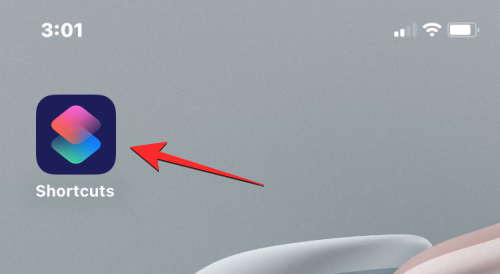
Inside Shortcuts, tap on the Automation tab at the bottom.
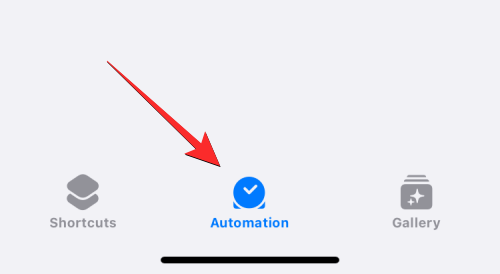
On this screen, tap on the + icon at the top right corner to create an Automation. You can proceed to the next step if you don’t see this icon on your screen which could be because you’re yet to create and add an Automation to the Shortcuts app.
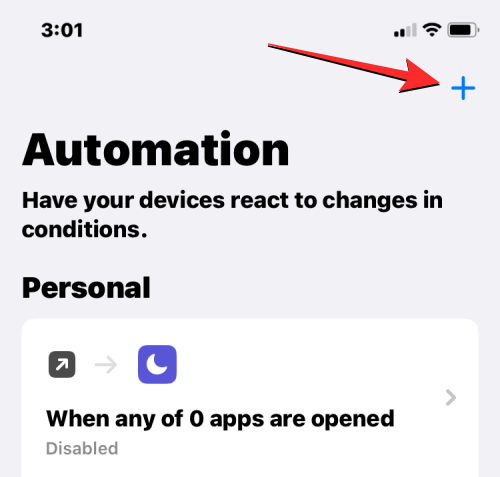
Now, select Create Personal Automation on the next screen.
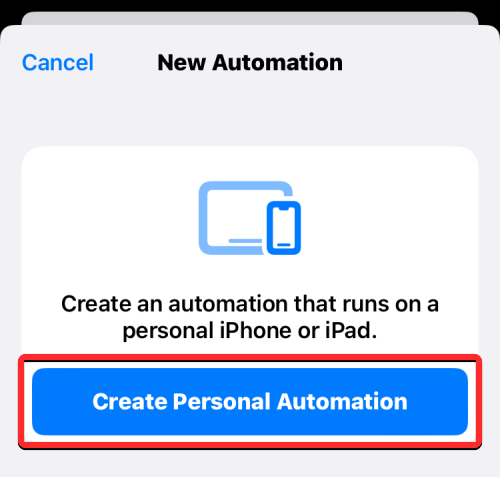
In the New Automation screen, select Time of Day.

On the next screen, you will have to choose a specific time to send your message and configure how often you want to send this message again. Here, you can choose Sunrise, Sunset, or Time of Day. If you choose the last option, you will have to set the time at which you want to send the message.
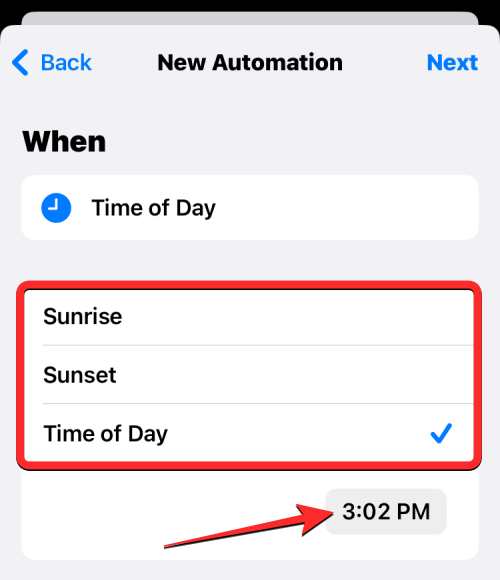
You can change this time by tapping on the time box and then moving the hour and minute dials to your preferred time.
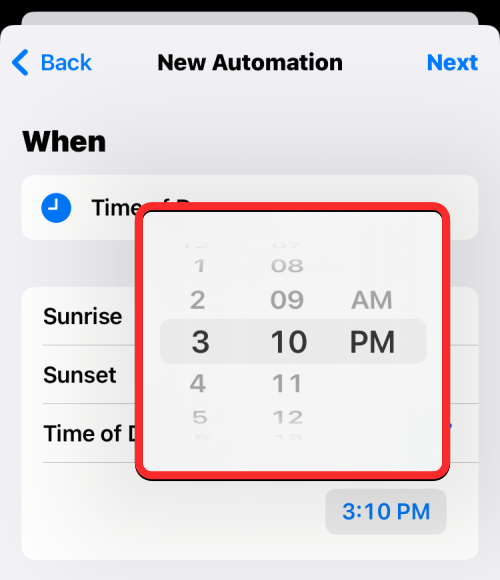
Next, you can configure when to repeat the message by selecting Daily, Weekly, or Monthly under the “Repeat” section.
Depending on the repeat option you choose, you’ll be able to set the days of the week or a specific date every month at which the message you create is sent.

Once you’ve configured the time to schedule a message, tap on Next at the top right corner.
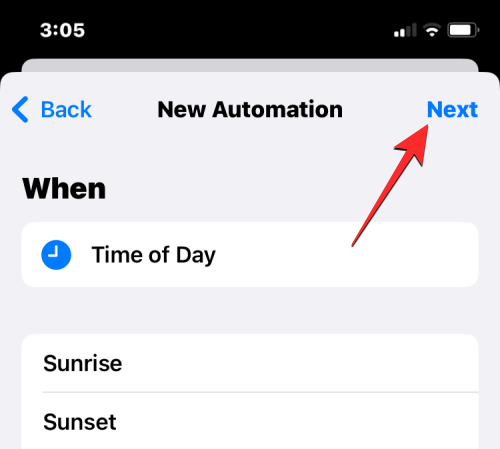
In the Actions screen that appears, tap on Add Action.
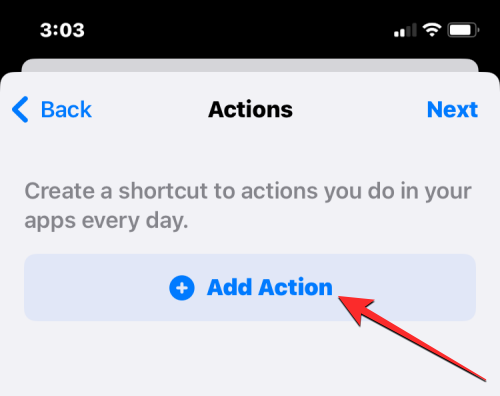
You’ll now see a new popup menu that lists all the actions available on the Shortcuts app. Inside this popup, tap on the search bar at the top and type “Send” to search for relevant actions.
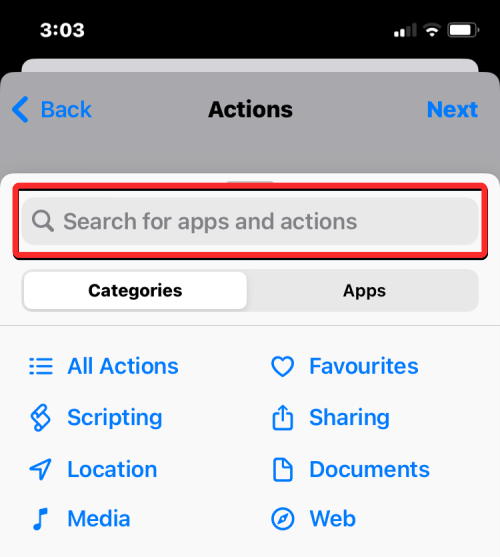
When the search results appear, select Send Message under “Sharing”.
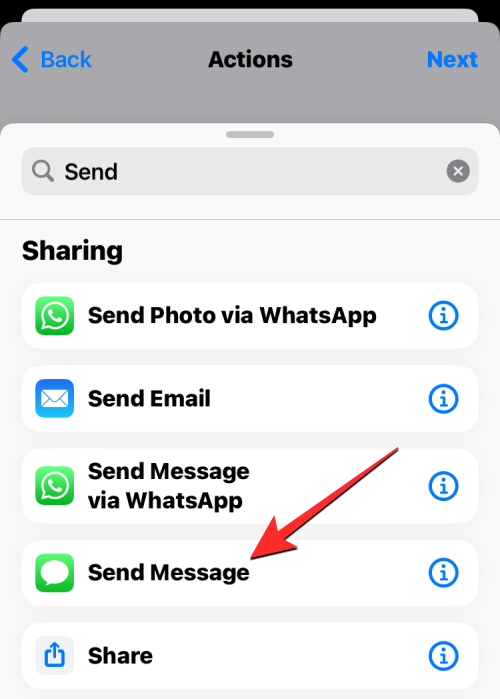
The Send Message action will now appear inside the Actions screen. On this action box, tap on Message.
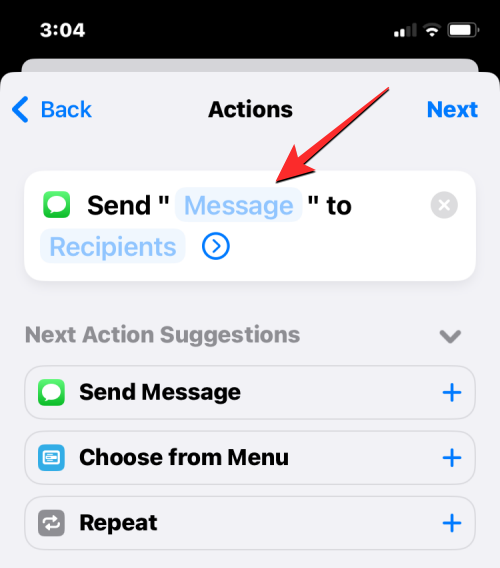
When the keyboard pops up, type the message you want to schedule and then tap on Done above the keyboard.

Next, tap on Recipients inside the same action box.
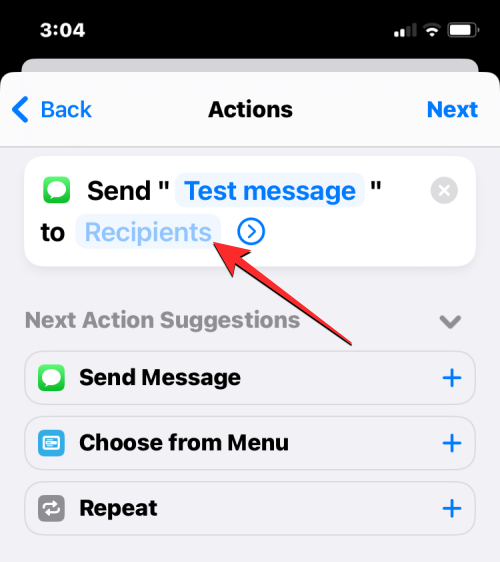
On the next screen, enter the name or phone number of the person you wish to send the message to inside the “To” box. If you want to send this message to multiple contacts at once, tap on the + icon on the right-hand side of the “To” box. If not, tap on Done to continue.
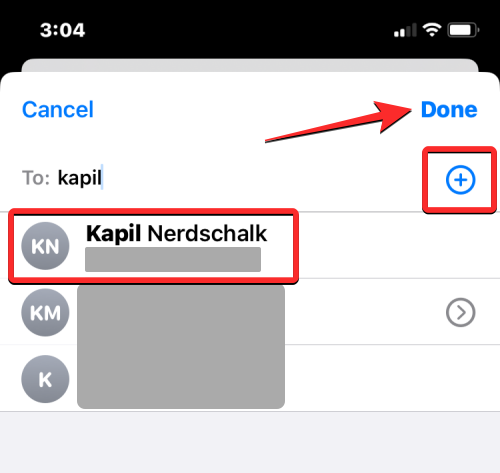
Once you’ve scripted your message and chosen your preferred contacts to send it to, tap on Next at the top right corner.
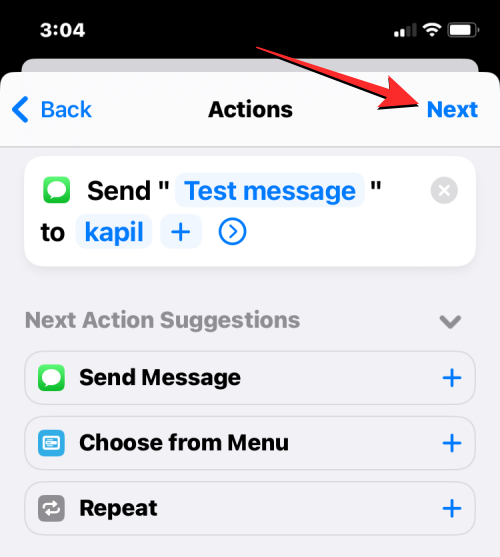
The Shortcuts app will now show you a preview of the Automation you created. Since scheduled messages are intended to be sent even when you’re not actively using your phone, you may need to turn off the Ask Before Running toggle on this screen.
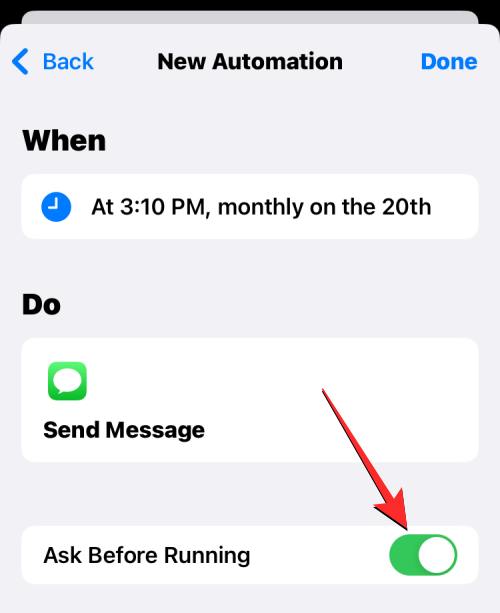
In the prompt that appears, tap on Don’t Ask to confirm.
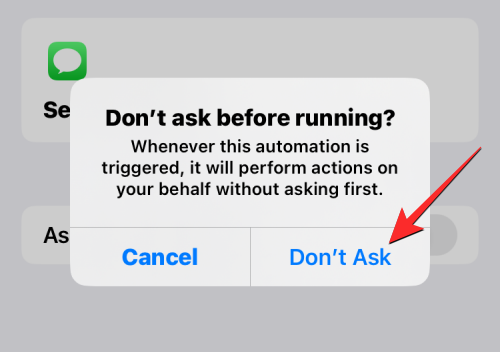
You can now turn on the Notify When Run toggle to make sure you know when the scheduled message is sent from your iPhone.
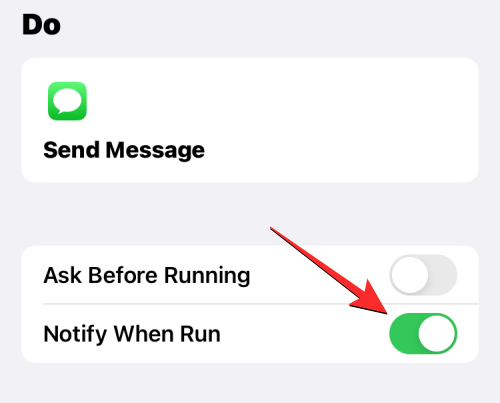
To confirm the Automation, tap on Done at the top right corner.

The Automation you created for sending scheduled messages will now appear inside the Automations tab on the Shortcuts app.
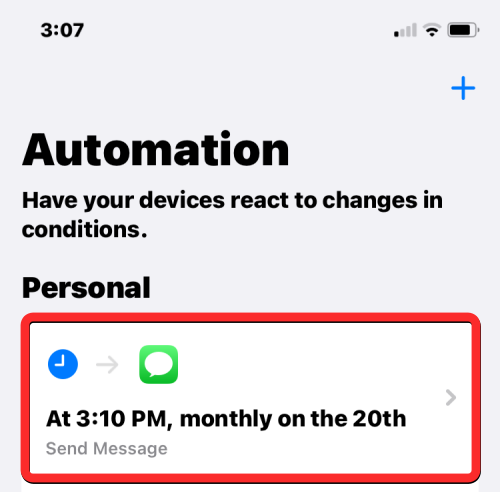
When the scheduled time arrives, the Shortcuts app will run the Automation and send the preconfigured message to the selected contact. You will receive an alert on your lock screen and Notification Center that says your Automation is being run.
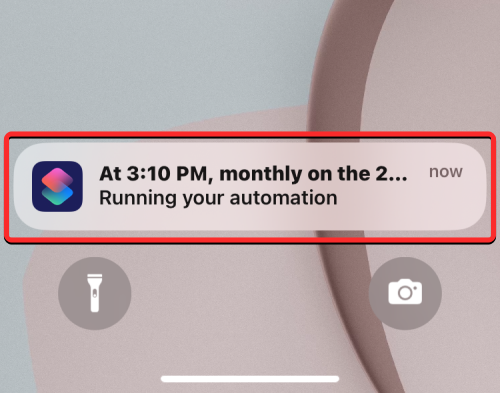
The message you scheduled will now be sent from the Messages app on your iPhone.
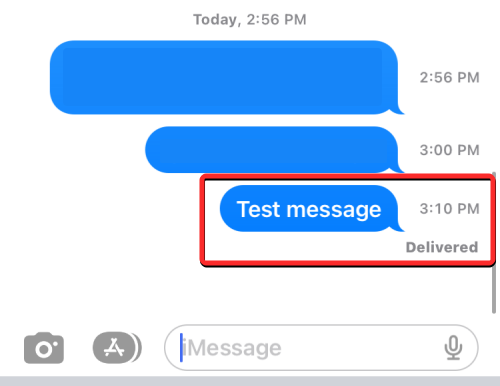
Method #2: Using Send Delayed Text Message shortcut
The above method is helpful when you want to send a message repeatedly to the same person at regular intervals. If you want to schedule different messages for different people, you can use the Send Delayed Text Message shortcut. This user-created shortcut can help you schedule messages directly from your Home Screen to anyone you want with the same Shortcuts app that you used in the method above.
To get started, click on this link to open the Send Delayed Text Message shortcut page inside Safari or any other web browser. When the page loads up, tap on Get Shortcut.
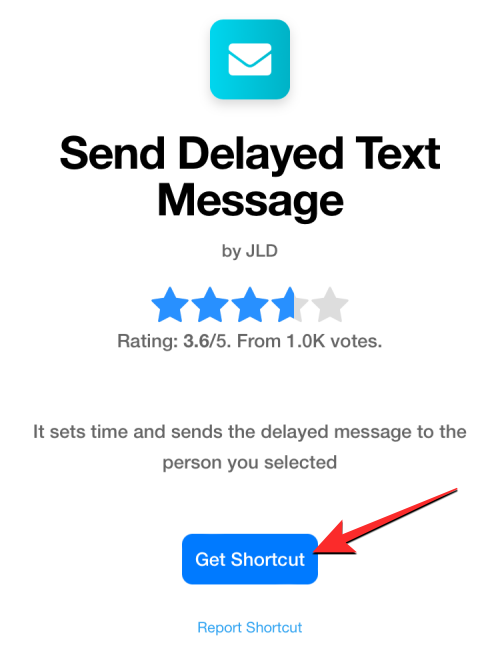
This will load the shortcut inside the Shortcuts app on your iPhone. To add it to your device, tap on Add Shortcut at the bottom.
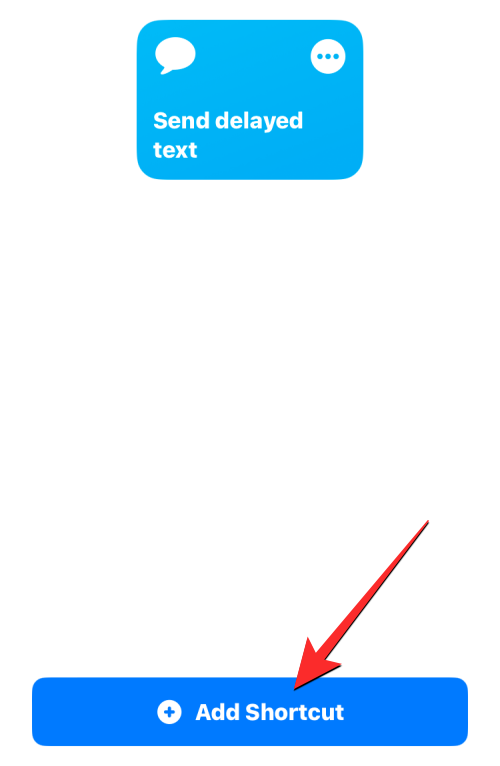
The new shortcut will now appear inside the Shortcuts tab on the app. Whenever you wish to schedule a message, you will need to access this screen to use the Send Delayed Text shortcut.

If you don’t want to open the Shortcuts app again and again for sending scheduled messages, you can add it to your home screen as a widget.
To make sending scheduled messages easier, you can add the shortcut’s widget to your home screen. To do that, long-tap on an empty portion on your home screen. When the icons start jiggling, tap on the + button at the top left corner.
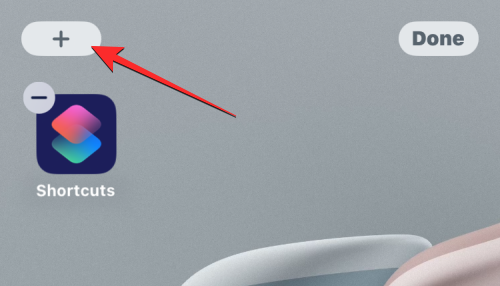
In the Widgets list that appears, select Shortcuts.
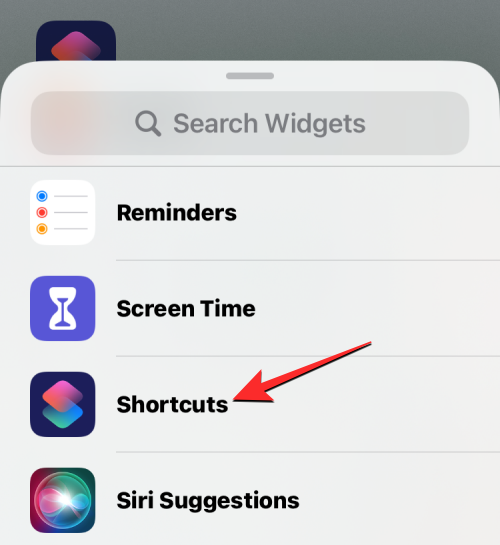
If you only wish to have a shortcut for sending scheduled messages, select the smallest widget on this screen (the one on the leftmost side) and then tap on Add Widget at the bottom.

The shortcuts widget will now be added to your home screen. To select the Send Delayed Text shortcut for this widget, tap on the widget.

In the overflow box that appears, tap on Shortcut.
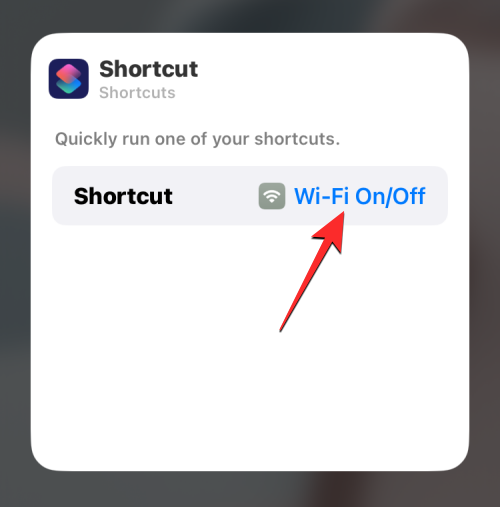
On the next screen, select Send Delayed Text from the list of shortcuts.
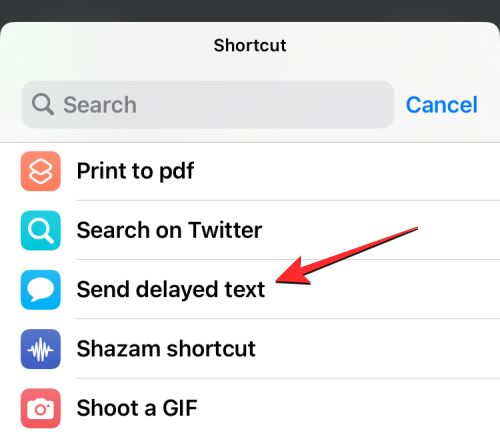
The selected shortcut will now appear on your home screen. To confirm changes, tap on Done at the top right corner.
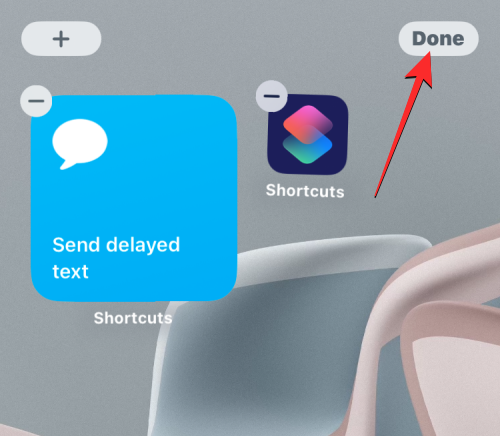
When you want to schedule a message, tap on the Send Delayed Text widget on your home screen or access it by opening the Shortcuts app on your iPhone.
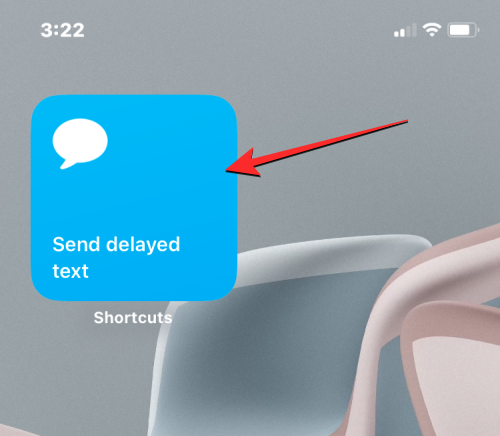
You will now see the Contacts screen from where you will need to select a contact you want to send a message to. When choosing the contact, it’s important to make sure you select a contact whose phone number is available. You cannot send scheduled messages to contacts with email addresses. You can use the search bar at the top to type the name of the person you want to send a message to.
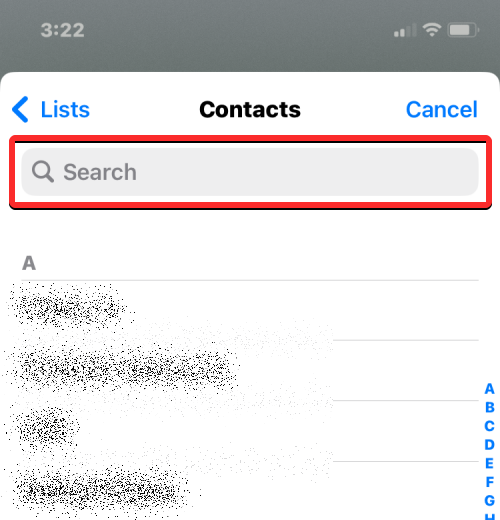
From the search results, tap on the person to whom you want to schedule a message.

After you’re done selecting the contact, the shortcut will ask you to type the text you want to send.
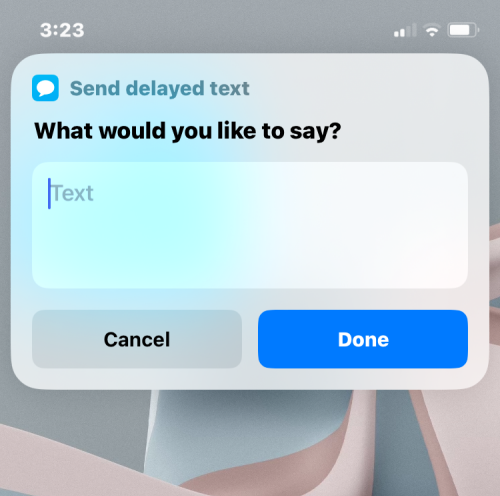
In the “What would you like to say?” box, enter the text you wish to schedule to send and then tap on Done.
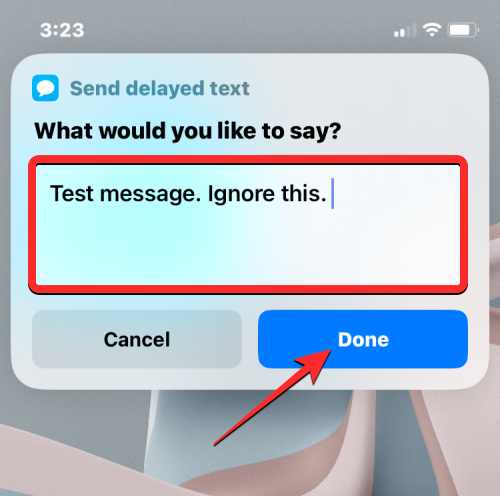
You will now see another overflow box on the screen asking you to choose a date and time at which you want to schedule a message. Choose a date on which you want to send the scheduled message. After selecting a date, tap on the time box to configure your preferred time to schedule.
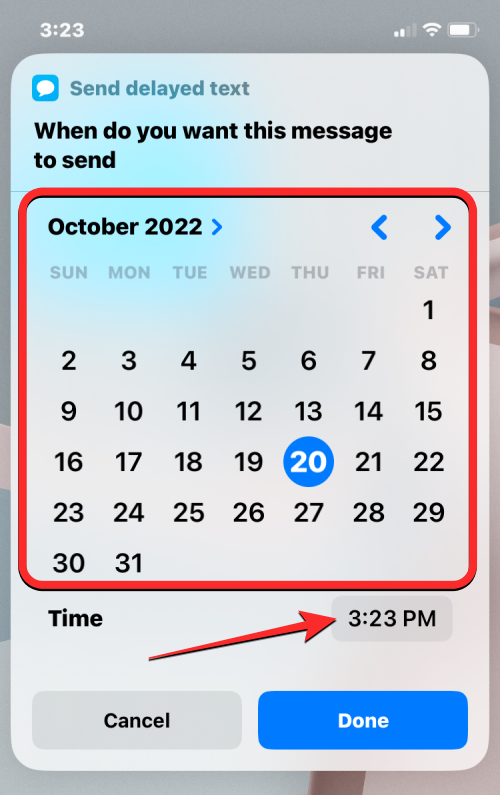
When the time box expands, slide the hour and minute dials to your desired time and tap elsewhere to set this chosen time. After you’ve set the preferred date and time to schedule the message, tap on Done.
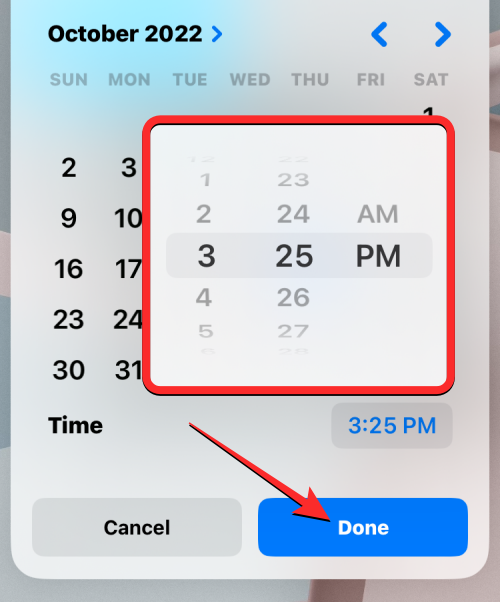
The shortcut will now run on your iPhone. If you opened the Shortcut app to run this shortcut, you need to make sure the app continues to run in the background and isn’t removed from your Recent Apps screen. If you’re running the shortcut using a home screen widget, it should run without any issues, unless you run some other shortcut.
If you’re using the shortcut for the very first time, you will see this prompt on the screen. If you plan to schedule messages often, you can choose Always Allow. If you choose Allow Once, the Shortcuts app will ask you for your permission every time the message needs to be sent which wouldn’t be useful when you’re not actively using your iPhone. So, we suggest selecting Always Allow when sending scheduled messages with this shortcut.
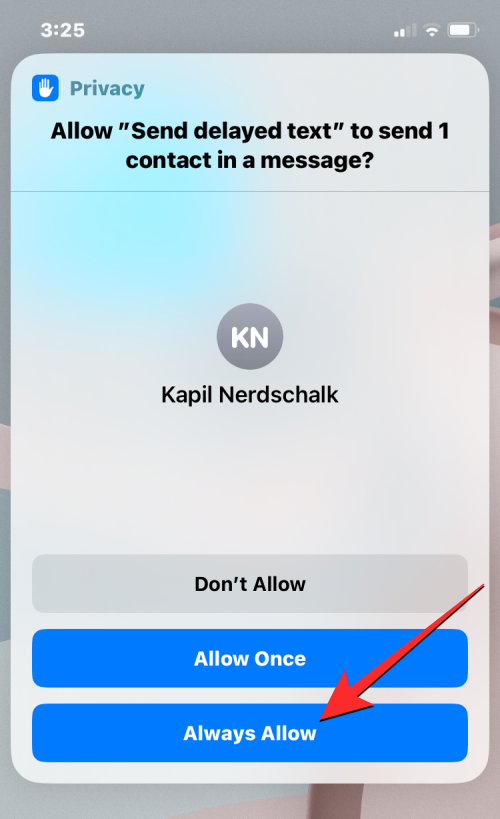
The message you created will now be sent to the recipient.
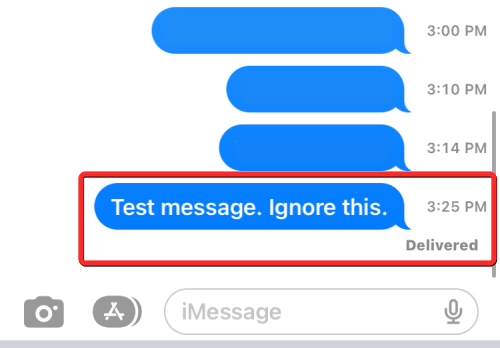
You can repeat the above steps to send more scheduled messages and when you choose Always Allow, you won’t be asked for confirmation again for future messages.
Limitations of using the Shortcuts app
Since the Messages app doesn’t have a built-in function to schedule messages for later, the Shortcuts app provides a useful way of getting it done. However, it’s not the most convenient of options and there are some limitations to using either of the methods provided above.
For instance, method #1 from the guide above will only be helpful when you wish to repeatedly schedule the same message to the same person at regular intervals of your choice. You can use this method to schedule recurring messages daily, on certain days of the week, or on a particular day every month.
This method wouldn’t be of much help if you only intend to schedule a message that needs to be sent only once. If you want to schedule multiple messages, creating an Automation for them over and over again isn’t the most convenient solution.
That’s where method #2 comes in. Using this method, you can schedule messages right from your home screen (using the Shortcuts widget) and create different messages to send to different people at different times. Messages you schedule are a one-time event and won’t be repeatedly sent to the recipient later in the future.
The Send Delayed Text shortcut works even when your iPhone is locked although the message may be slightly delayed when it’s locked. The only downside to this method is that you cannot schedule a new message unless the previously scheduled message is sent since iOS cannot run two instances of the same shortcut on your device.
What else can you do instead of scheduling messages?
Since the Messages app on iOS doesn’t have a built-in option to schedule messages, using the Shortcuts app is the only way you can automate the experience via the Messages app. If you don’t find either of these methods convenient, you can check out the following alternatives that offer similar functionalities depending on how you wish to use them.
Use the Reminders app to notify yourself when to send a message
If you think you’re better off creating a message that you wish to send later yourself, then one way to get the job done is by setting reminders on your iPhone. You can create a reminder by tapping on + New Reminder inside the Reminders app on iOS.
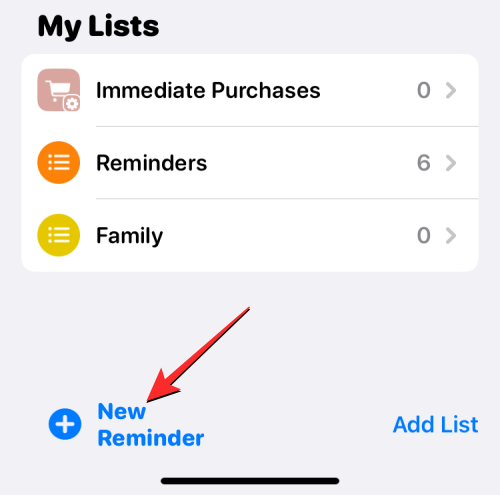
When the New Reminder screen opens, select Details and turn on the Date and Time toggles to configure them to your specific time.
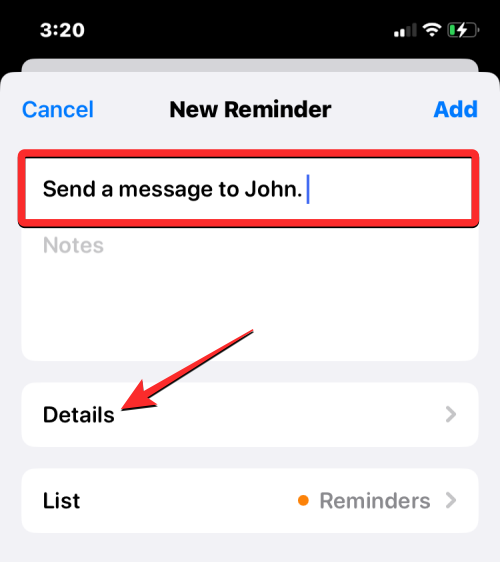
When the time comes, the app will send you an alert to remind you that it’s time to send someone a message. You can achieve the same result much more easily by activating Siri on your iPhone. Press and hold the Side button until Siri appears on the screen and say something like “Remind me to text John at 8 AM tomorrow about staff meeting”.
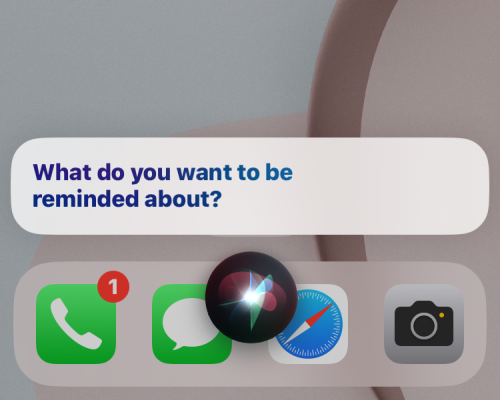
Create events inside the Calendar to schedule messages
Just like reminders, you can use the Calendar app on iOS to schedule events to notify yourself when to send a message. To create such an event, open the Calendar app on your iPhone and tap on the + icon at the top right corner.
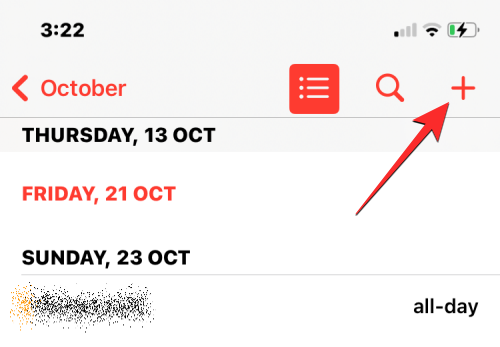
When the New Event screen appears, add an alert to remind yourself about a message as the title. You can then configure the event period for a specific time period when the message needs to be sent. You can also choose to alert yourself some minutes or hours before the set time so that you don’t forget about it.
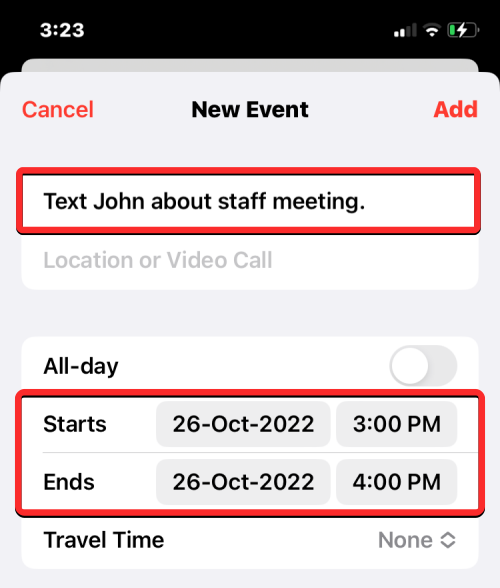
On the same screen, you can type the actual message you want to send inside the “Notes” section so that you can copy-paste it into the Messages app when the time arrives.
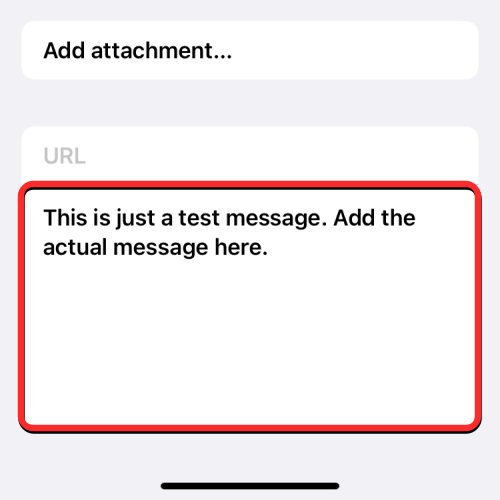
When the time arrives, the Calendar app will notify you to send the scheduled message.
Use an app that offers scheduled messages
There are a lot of third-party apps on the App Store that provide the ability to send scheduled messages. They can be used to send a one-time message to someone at your chosen time or can be configured to send messages at specific intervals. If you don’t find the above methods and alternatives useful, you can check out the following apps that offer support for scheduled messages:
All of these apps have different ways to follow to schedule messages on your iPhone but the functionality will be limited with in-app purchases or subscriptions.
Schedule messages on Apple Mail instead
Unlike the Messages app, Apple’s Mail app offers the ability to compose emails and prepare them to be sent at a later time. The functionality is available as a Scheduled Send option that was released with iOS 16.
You can use the feature to send a scheduled email – at 09:00 PM on the same day or at the same time the next day. Additionally, you can schedule the message to be sent at your desired date and time, if the existing options aren’t preferable.
If you wish to learn more about the feature and see how you can use it, check out the post linked below.
► How to Schedule an Email on Apple Mail on iOS 16
That’s all you need to know about scheduling messages on iOS 16.

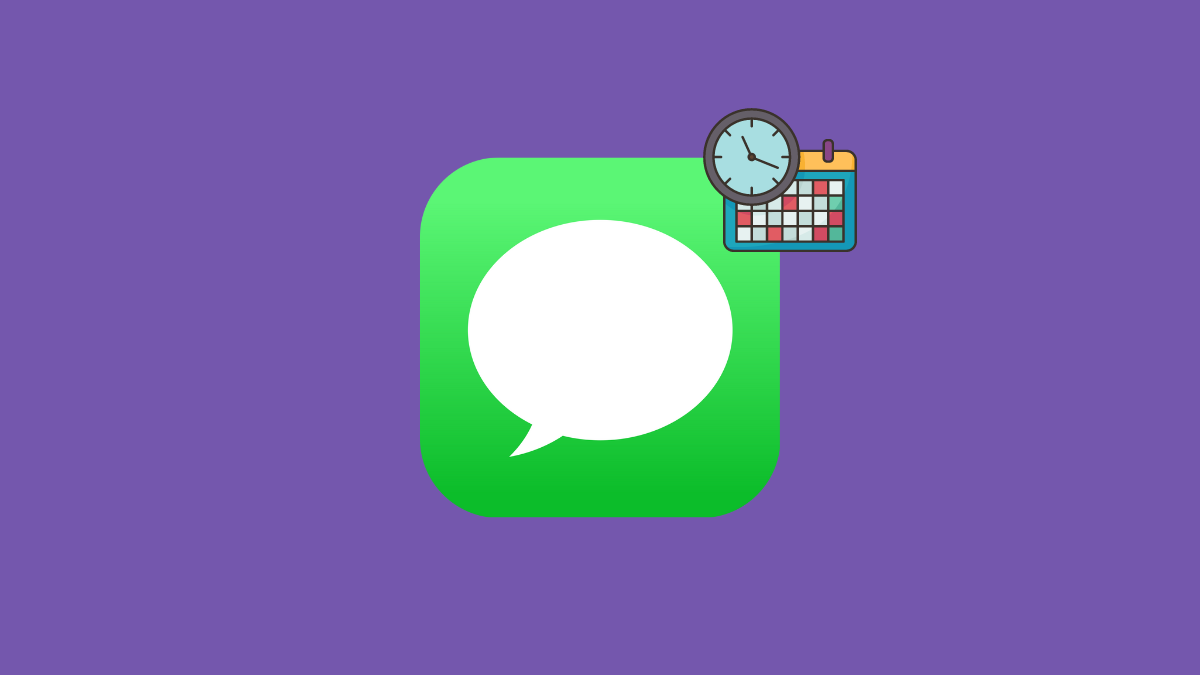










Discussion